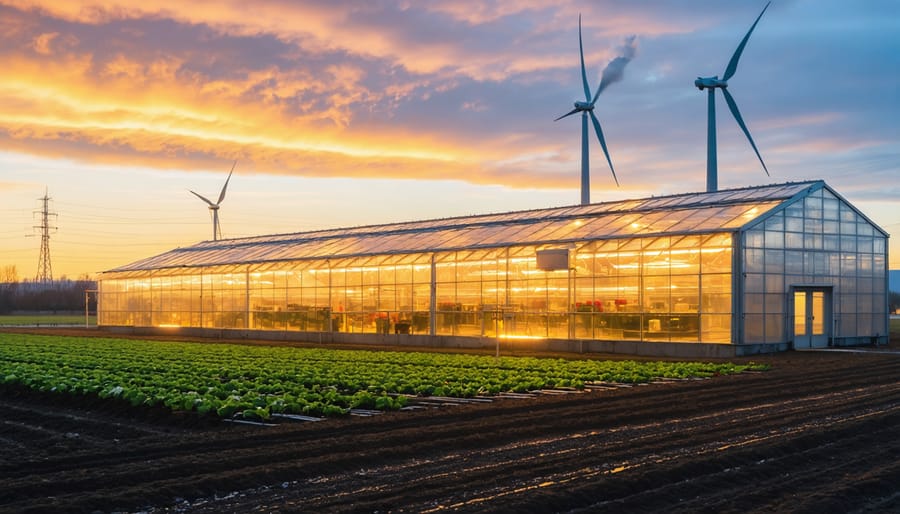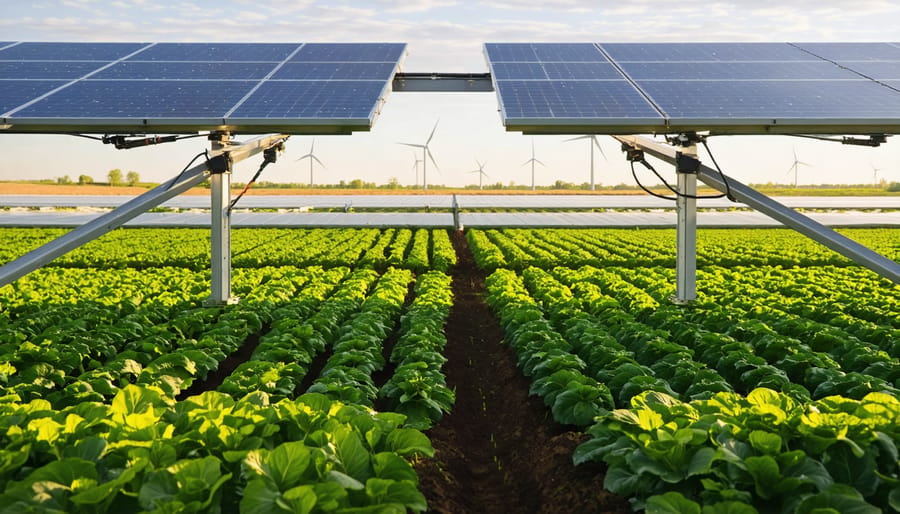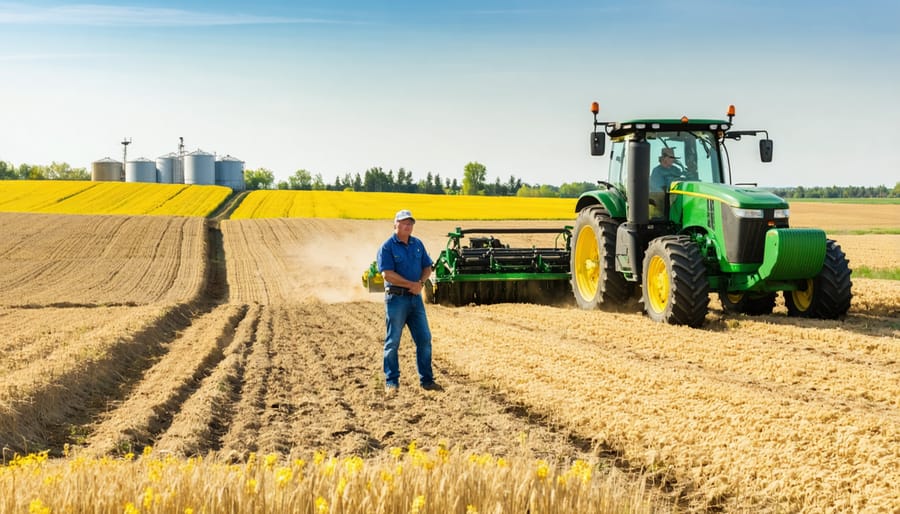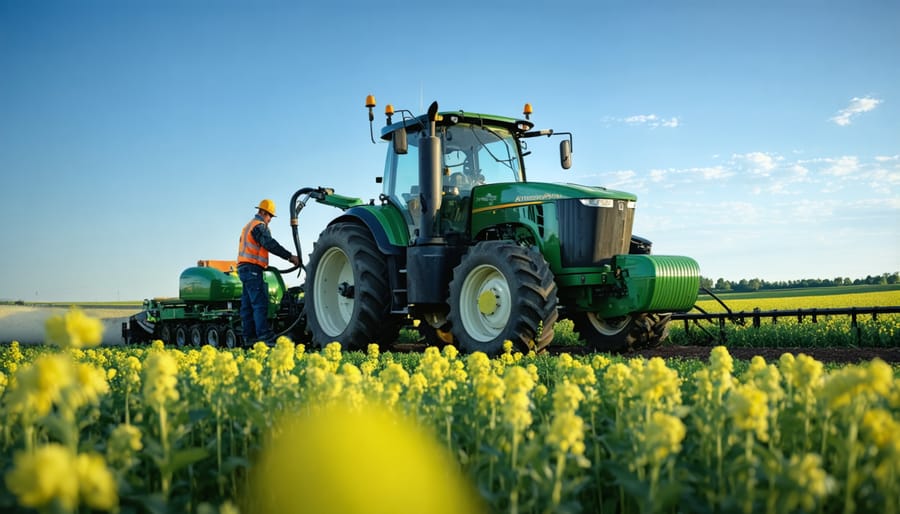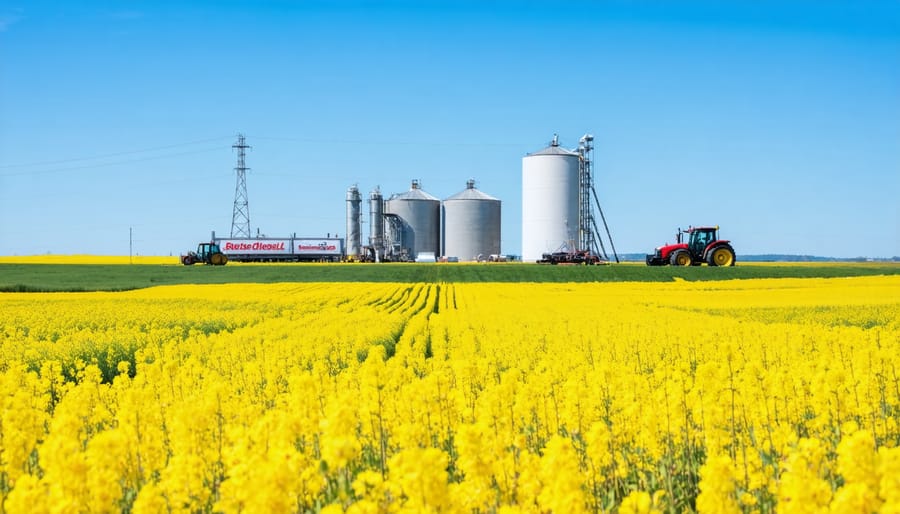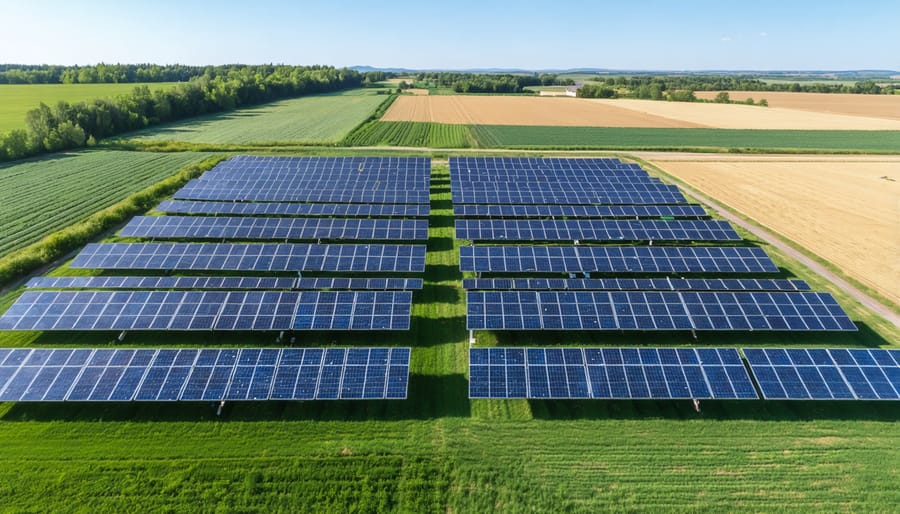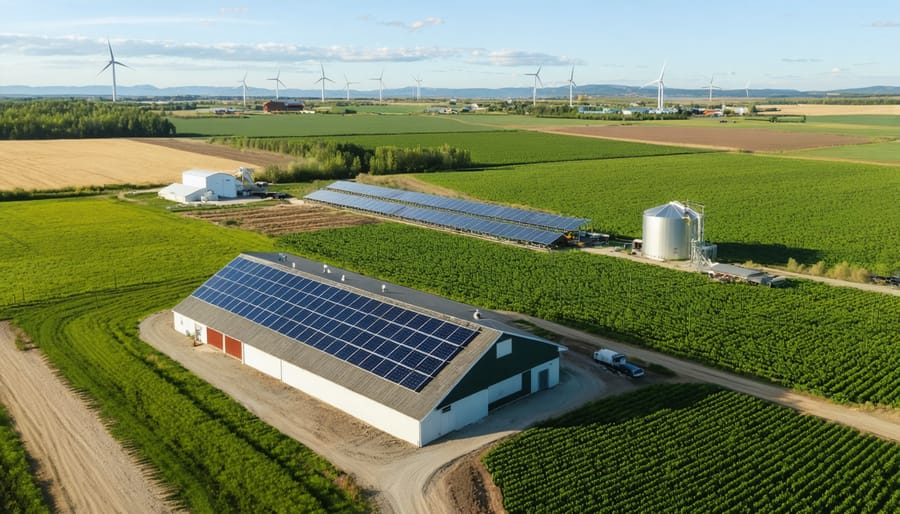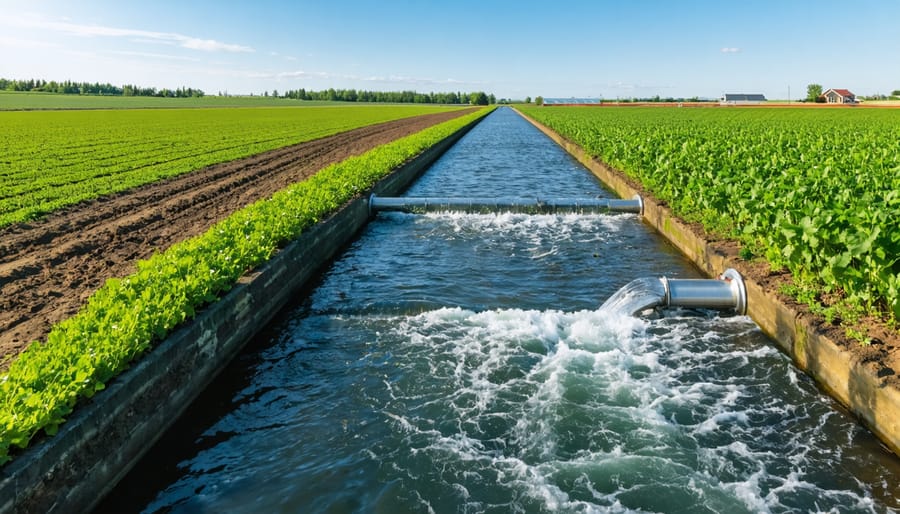Deep beneath Earth’s surface, a remarkable energy transformation occurs that powers geothermal plants across Canada. These facilities tap into natural heat reservoirs where temperatures can reach over 150°C, turning Earth’s thermal energy into clean, reliable electricity. At facilities like the proposed Alberta No. 1 geothermal project, high-pressure pumps drive cold water through kilometers of rock, where it absorbs intense geothermal heat before rising back as steam. This steam drives sophisticated turbines connected to generators, producing consistent renewable power 24 hours a day, regardless of weather conditions – a crucial advantage for Canadian agriculture and industry. Unlike traditional power plants, geothermal facilities create minimal emissions while providing both electricity and direct heating capabilities, making them an increasingly vital part of Canada’s sustainable energy future.
Inside a Modern Geothermal Power Plant
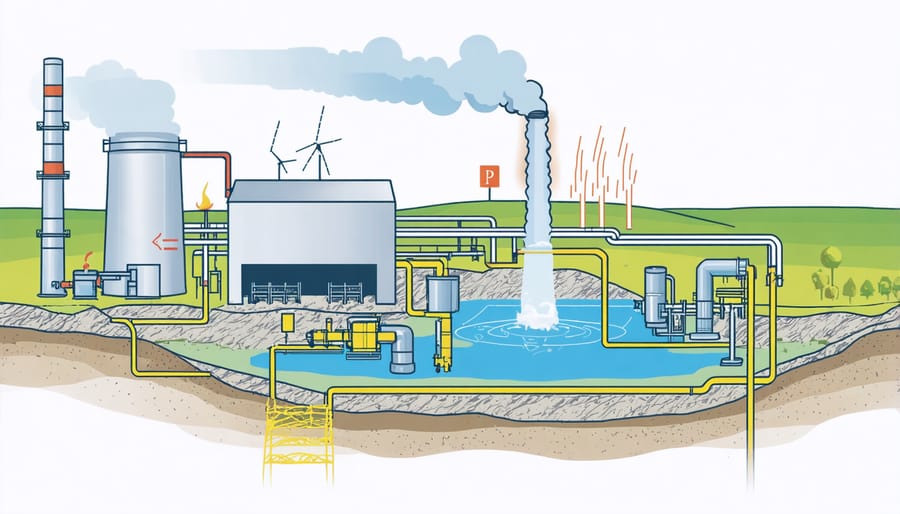
The Heat Extraction Process
The heat extraction process in geothermal power plants starts with drilling deep wells into underground reservoirs where temperatures typically range from 150°C to 300°C. Here in Alberta, these wells often extend 2-3 kilometers below the surface, tapping into the natural heat stored in our geological formations. These wells work in pairs – an injection well and a production well – creating a closed-loop system.
The injection well pumps cold water down into the hot rock formations, where it travels through natural fractures and pathways in the rock. As the water moves through these heated layers, it absorbs the earth’s natural heat, much like how groundwater naturally warms in hot springs. The now-heated water is then drawn up through the production well using specialized pumps.
Local farmer Tom Henderson, who installed a small-scale geothermal system on his greenhouse operation near Red Deer, explains, “Think of it like a giant underground radiator. The earth’s heat is always there, waiting to be accessed. It’s just a matter of having the right system to tap into it.” The extracted hot water, typically reaching temperatures of 150°C or higher in commercial operations, then moves on to power generation equipment at the surface.
Converting Earth’s Heat to Farm Power
At the heart of geothermal power generation lies a remarkably efficient process that converts Earth’s natural heat into usable farm power. Deep wells, typically drilled 2-3 kilometres beneath the surface, tap into naturally heated underground reservoirs. As this heated water rises, it transforms into steam under intense pressure. The steam then drives specially designed turbines connected to generators, which convert this mechanical energy into electricity that can power various farm operations.
For Alberta farmers, these systems are particularly valuable when integrated with geothermal storage solutions that help maintain consistent energy supply throughout the year. The process is continuous – after the steam passes through the turbines, it cools and condenses back into water, which is then returned underground to be reheated naturally, creating a sustainable cycle.
What makes this system especially practical for Canadian farms is its reliability. Unlike solar or wind power, geothermal energy production remains steady regardless of weather conditions or time of day, providing dependable power for crucial farm operations like greenhouse heating, grain drying, and livestock facility climate control.
Agricultural Applications in Alberta
Greenhouse Operations
The Lacombe Research Centre in Alberta stands as one of Canada’s leading examples of geothermal greenhouse success stories, demonstrating how year-round cultivation is possible even in our harsh climate. Their 2,000-square-metre facility maintains optimal growing temperatures of 20-25°C throughout the year using geothermal energy, significantly reducing traditional heating costs.
The greenhouse operates by circulating hot water from geothermal wells through a network of pipes beneath the growing beds and along the structure’s perimeter. This system provides consistent soil temperatures of 18°C, ideal for root development in various crops. During winter months, when outside temperatures can plunge below -30°C, the geothermal system maintains growing conditions while using just 30% of the energy required by conventional heating methods.
Local farmer Sarah Thompson, who manages the facility, reports annual energy savings of approximately $45,000 compared to natural gas heating. The greenhouse successfully produces tomatoes, cucumbers, and leafy greens year-round, supplying fresh produce to local markets even during winter months. The consistent temperature control has also led to a 25% increase in crop yields compared to traditional greenhouse operations.
What’s particularly encouraging for Alberta farmers is that similar systems can be implemented on a smaller scale, with initial investments typically recovered within 4-6 years through reduced operating costs and extended growing seasons.

Soil Heating Systems
In Alberta’s challenging climate, soil heating systems powered by geothermal energy are revolutionizing year-round farming capabilities. These systems harness the earth’s natural warmth through a network of underground pipes filled with a heat-transfer fluid, typically maintaining soil temperatures between 15-20°C throughout the growing season.
Local farmer Sarah Thompson from Red Deer shares her experience: “After installing geothermal soil heating in our greenhouse, we extended our growing season by nearly three months. The system pays for itself through increased crop yields and reduced energy costs.”
The implementation involves laying pipes approximately 30-45 cm below the soil surface in growing areas. These pipes connect to a geothermal heat exchanger, which draws warmth from deeper underground wells typically reaching depths of 100-150 meters. The consistent soil temperature creates ideal growing conditions for various crops, from early-season vegetables to heat-loving plants that traditionally struggle in our climate.
Many Alberta farmers have reported success with these systems, particularly in greenhouse operations. The initial investment, while significant, is offset by reduced heating costs and increased production capacity. Government grants and sustainable agriculture initiatives often provide support for installation costs, making the technology more accessible to small and medium-sized operations.
For optimal results, experts recommend combining soil heating systems with proper insulation and temperature monitoring equipment. This approach ensures efficient energy use while maintaining ideal growing conditions throughout Alberta’s varying seasons.
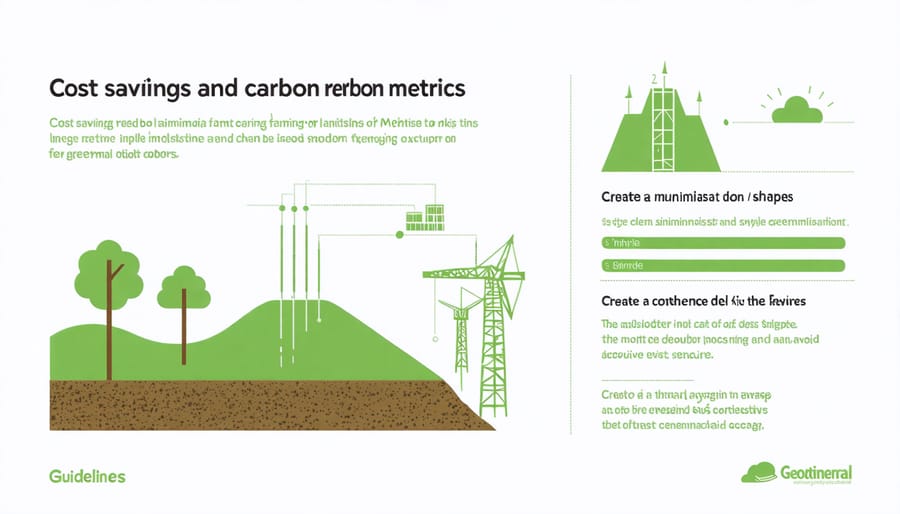
Environmental and Economic Benefits
Carbon Footprint Reduction
Geothermal power plants significantly reduce greenhouse gas emissions compared to traditional fossil fuel-based energy sources. In Alberta’s agricultural sector, a typical geothermal facility can offset approximately 25,000 tonnes of CO2 emissions annually – equivalent to removing 5,400 cars from the road. These environmental benefits have caught the attention of local farmers looking to minimize their carbon footprint while maintaining productive operations.
Through carbon credit programs, farmers implementing geothermal systems can earn additional revenue. Under Alberta’s Technology Innovation and Emissions Reduction (TIER) system, agricultural operations using geothermal energy can generate carbon credits worth between $50-70 per tonne of CO2 reduced. For a mid-sized farm operation, this could translate to $15,000-25,000 in annual carbon credit revenue.
Local success stories include the Anderson family farm near Drumheller, which reduced its annual emissions by 75% after switching to geothermal heating for their greenhouse operations. Beyond carbon reductions, their system eliminated the need for propane heating, resulting in cleaner air quality and improved working conditions for farm staff.
The environmental impact extends beyond emissions reduction, as geothermal plants have minimal land requirements and can operate continuously without depending on weather conditions, making them ideal for year-round agricultural applications.
Financial Returns
The financial returns of geothermal power plants can be substantial, particularly for agricultural operations in Alberta. Initial installation costs typically range from $250,000 to $500,000 for a mid-sized farm operation, but various government incentives help offset these expenses. The Canada Greener Homes Grant offers up to $5,000 for residential installations, while the Agricultural Clean Technology Program provides funding of up to 50% for larger agricultural projects.
According to Alberta farmer Jim Thompson, who installed a geothermal system in 2019, his operation saves approximately $45,000 annually on energy costs. “The system paid for itself in just over four years,” Thompson notes, “and that’s not counting the carbon credit benefits we receive.”
Current estimates suggest a properly maintained geothermal system can reduce energy costs by 40-70% compared to traditional heating methods. The Alberta Renewable Energy Producer Credit also offers $0.036 per kilowatt-hour produced, making the investment even more attractive.
Additional financial benefits include increased property value, reduced maintenance costs compared to conventional systems, and potential income from selling excess power back to the grid. With system lifespans averaging 25-30 years, the long-term return on investment makes geothermal power an economically sound choice for Canadian agricultural operations.
Getting Started with Geothermal
Starting your geothermal journey requires careful planning and assessment of your farm’s specific needs. Begin by conducting a thorough site evaluation to determine your land’s geothermal potential. Local geological surveys and heat maps can provide valuable insights into underground thermal resources in your area.
Next, connect with experienced geothermal contractors who understand agricultural applications. The Canadian Geothermal Energy Association maintains a directory of certified professionals who can help guide your farm energy transformation. Consider joining local farmer networks to learn from those who’ve already implemented geothermal systems.
Start small by identifying key areas where geothermal energy could provide immediate benefits, such as greenhouse heating or dairy operations. Many Alberta farmers find success by beginning with a pilot project before scaling up. Provincial and federal grants are available to help offset initial costs – contact your local agricultural extension office for current funding opportunities.
Remember to secure necessary permits and environmental assessments early in the process. Work with your municipality to understand zoning requirements and drilling regulations. Consider partnering with neighboring farms to share resources and potentially reduce installation costs through economies of scale.
Most importantly, develop a realistic timeline for implementation. Successful geothermal projects typically take 6-12 months from planning to completion, depending on scope and complexity. Start your planning during the off-season to minimize disruption to farm operations.
As we look to the future of Canadian agriculture, geothermal energy presents a transformative opportunity for our farming communities. By harnessing the Earth’s natural heat, farmers across Alberta and beyond can significantly reduce their operating costs while contributing to environmental sustainability. The success stories we’ve seen, from greenhouse operations in Medicine Hat to innovative dairy farms near Hinton, demonstrate that geothermal technology is not just viable but prosperous in our climate.
With rising energy costs and increasing pressure to adopt sustainable practices, geothermal solutions offer a reliable, clean energy alternative that works year-round. The initial investment in geothermal infrastructure can be offset by substantial long-term savings and available government incentives. As more Canadian farmers embrace this technology, we’re building a more resilient and sustainable agricultural sector that future generations can rely on.
Together, we can lead the way in sustainable farming practices while maintaining our competitive edge in global markets. The path to geothermal adoption is clear, and the time to act is now.

